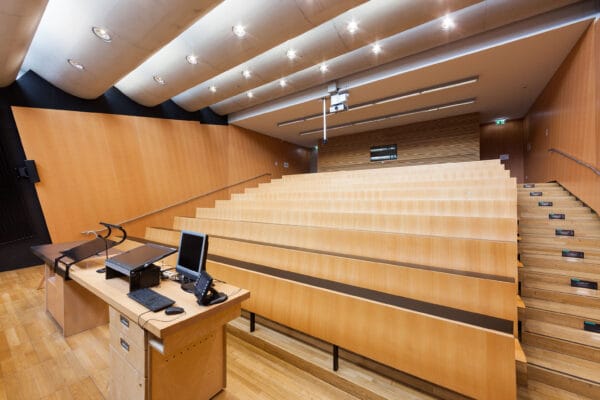
NAME:
SOWI - HS 2
BUILDING:
SOWI
FLOOR:
0
TYPE:
Lecture Hall
CAPACITY:
80
ACCESS:
Only Participants
EQUIPMENT:
Beamer, PC, WLAN (Eduroam), Overhead, Flipchart, Blackboard, Sound System, Handicapped Accessible, Light Installation
Glacier bare-ice is increasingly exposed to higher temperatures and for longer periods of time – leading to a growing importance of bare-ice albedo in the surface energy budget of glaciers. However, the role of bare-ice albedo variability in controlling melt rates remains poorly understood. This study addresses this gap by analyzing the sub-seasonal and inter-annual variability of bare-ice albedo on Abramov and Golubin glaciers in Kyrgyzstan between 1999 and 2022. Using Landsat surface reflectance data, we derived albedo products, investigated their relationship with air temperature, and explored their implications for glacier melt. Our results reveal distinct albedo-mass balance relationships between the two glaciers, driven by different sensitivities to elevation-dependent refreezing processes. Both glaciers exhibit a sub-seasonal albedo cycle linked to air temperature, but elevation-dependent refreezing events appear to play a key role in maintaining high albedo and limiting melt on Abramov. This results in a significant correlation between bare-ice albedo and mass balance for Abramov but not for Golubin. Bare-ice albedo decreased over the tongue of Abramov Glacier in July and August between 1999 and 2017, whereas no such trend was observed for Golubin Glacier – likely due to changes of the elevation-dependent temperature gradient, which influences refreezing and melt processes differently across altitudes. Rising temperatures are thus expected to lead to darker bare ice and amplified feedback melt cycles, especially at high-elevation and radiation dominated glaciers where refreezing and surface weathering crust formations are common. Our results highlight the urgent need to investigate albedo-driven variations in surface mass balance and to incorporate bare-ice albedo variability into glaciological models, enhancing the accuracy of projections for glacier response to intensifying climate change.

We and use cookies and other tracking technologies to improve your experience on our website. We may store and/or access information on a device and process personal data, such as your IP address and browsing data, for personalised advertising and content, advertising and content measurement, audience research and services development. Additionally, we may utilize precise geolocation data and identification through device scanning.
Please note that your consent will be valid across all our subdomains. You can change or withdraw your consent at any time by clicking the “Consent Preferences” button at the bottom of your screen. We respect your choices and are committed to providing you with a transparent and secure browsing experience.